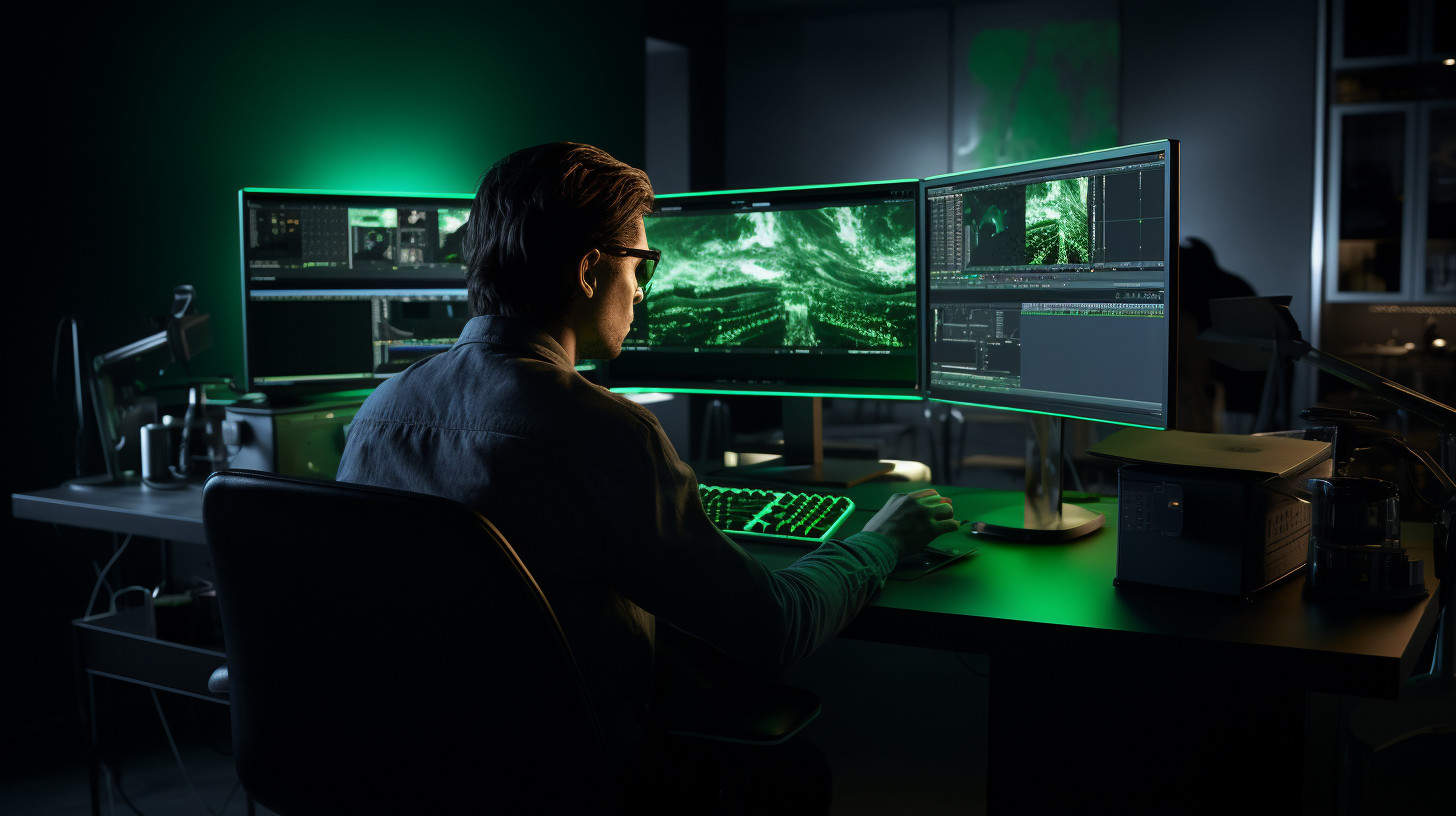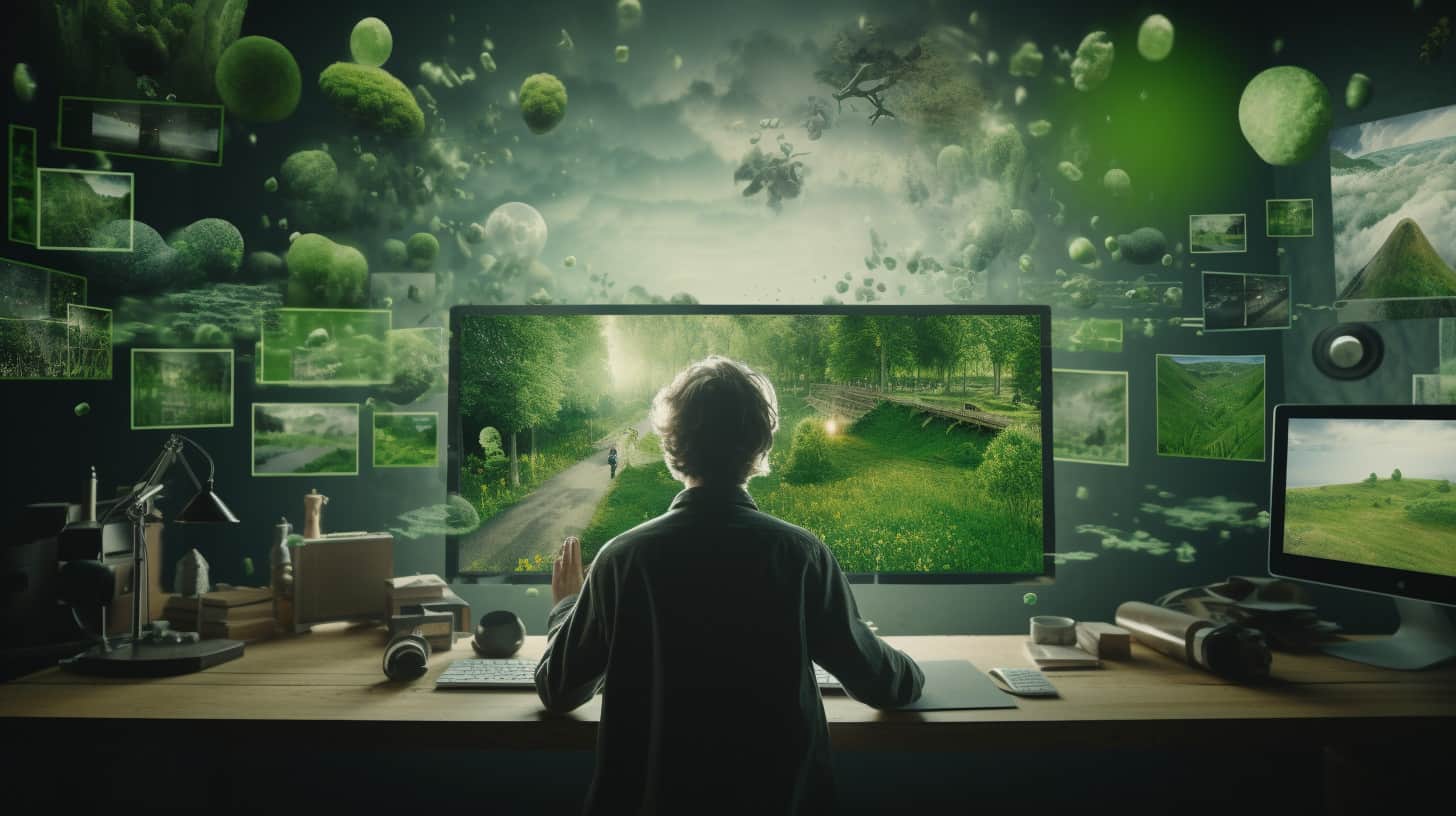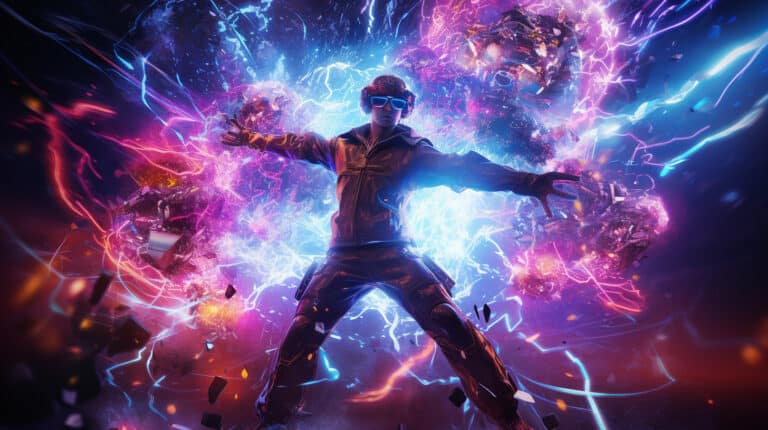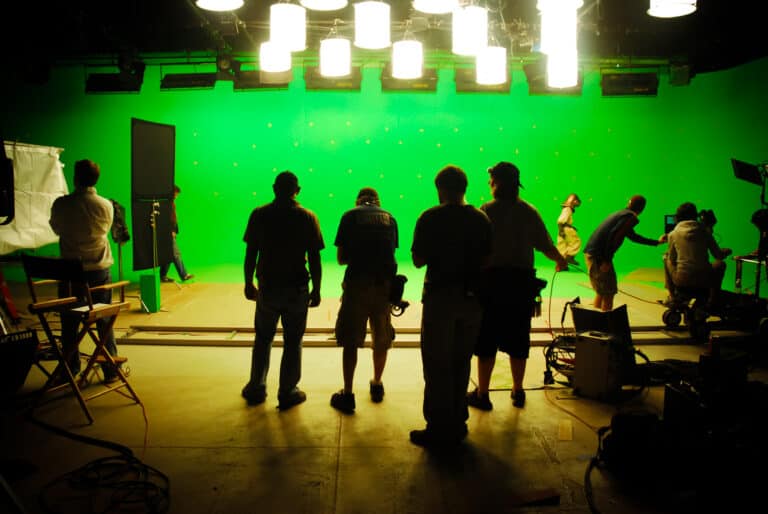VFX for Video Editing: Unleashing Creativity and Enhancing Storytelling
Are you ready to take your video editing skills to the next level?
Discover the power of VFX in unleashing your creativity and enhancing your storytelling.
In this article, we will explore the fundamentals of visual effects and guide you through the pre-production, production, and post-production stages of implementing VFX.
Get ready to dive into the world of VFX and explore the endless possibilities it holds for your video editing projects.
Let’s get started!
Key Points:
- Visual effects enhance storytelling in video editing by transporting viewers to different worlds and making the impossible possible.
- Effective collaboration between the video editor, director, and VFX artists is crucial for seamless integration of visual effects.
- Techniques such as layering, masking, keying, and blending modes can be used to enhance visual effects in video editing.
- Advanced visual effects techniques such as 3D modeling, texturing and shading, rigging and animation, and physics simulation can enhance the realism and immersion of visual effects.
Introduction to Visual Effects
Ready to unleash your creativity and elevate your storytelling?
Let’s explore the fascinating world of visual effects in video editing.
Discover the pivotal role that visual effects play in enhancing your videos, as well as the evolution and growing importance of these effects in the filmmaking industry.
Get ready to take your videos to the next level with the power of visual effects.
Role of Visual Effects in Video Editing
Visual effects play a crucial role in video editing by immersing viewers in captivating and visually stunning experiences. They’ve the power to transport you to another world, make the impossible possible, and enhance the overall storytelling.
Whether it’s adding realistic explosions to an action scene or creating fantastical creatures in a fantasy film, visual effects amplify the impact of the story and engage the audience on a deeper level. These effects not only enhance the visuals but also contribute to the emotional and narrative elements of the video. They can evoke a sense of wonder, fear, or excitement, making the viewing experience more memorable.
In today’s digital age, visual effects have become an integral part of video editing, pushing the boundaries of creativity and allowing filmmakers to bring their visions to life.
Evolution and Importance of Visual Effects
As you delve into the evolution and importance of visual effects, you’ll discover how these transformative elements have revolutionized the world of video editing.
Visual effects, or VFX, have come a long way since their inception. From the early days of practical effects to the cutting-edge technology of today, VFX have become an integral part of film and television production. They’ve the power to transport audiences to fantastical worlds, bring imaginary creatures to life, and enhance the storytelling experience.
Without visual effects, many iconic scenes and unforgettable moments would simply not be possible. From the mind-bending visuals of science fiction films to the subtle enhancements in dramas, visual effects have become essential tools for filmmakers to unleash their creativity and captivate audiences.
Fundamentals of Visual Effects
Ready to take your video editing skills to the next level?
In order to unleash your creativity and enhance storytelling, it’s important to understand the fundamentals of visual effects. This includes knowing the different types of visual effects and the tools and software used to create them.
Types of Visual Effects
Explore various techniques and tools to create captivating visual effects in your video editing process.
Visual effects can enhance the storytelling in your videos by adding elements that are impossible or difficult to capture in real life.
There are several types of visual effects that you can incorporate into your editing, each serving a different purpose.
Special effects, such as explosions or supernatural occurrences, can bring excitement and drama to your footage.
Matte painting and set extensions allow you to create realistic, immersive environments that transport your audience to different locations.
Motion graphics and text animations can help convey information or add a stylish touch to your videos.
Tools and Software for Visual Effects
To unleash your creativity and enhance storytelling in video editing, you need to have the right tools and software for visual effects. These tools will allow you to transform your footage into something extraordinary, taking your audience on a visual journey they won’t forget.
Here are four essential tools and software for visual effects that you should consider incorporating into your video editing process:
- Adobe After Effects: This industry-standard software is a powerhouse for creating stunning visual effects, motion graphics, and compositing.
- Blender: A free and open-source 3D creation suite that offers a wide range of features for modeling, animation, and visual effects.
- Blackmagic Fusion: This professional-grade software is known for its advanced compositing capabilities and is commonly used in Hollywood productions.
- Nuke: Another industry favorite, Nuke provides a powerful node-based compositing environment that allows for complex visual effects creation and integration.
Pre-production: Planning Visual Effects

Are you ready to unleash your creativity and enhance storytelling through visual effects?
In the pre-production stage, collaborating with the VFX team becomes crucial for seamless integration. By utilizing storyboarding and previsualization techniques, you can effectively plan and communicate your vision, ensuring that the visual effects align with the overall narrative and enhance the audience’s experience.
Collaborating for Visual Effects Integration
Effective collaboration is essential for successful integration of visual effects in video editing, allowing for seamless storytelling and enhanced creativity. When planning for visual effects integration, collaboration plays a crucial role in ensuring a smooth and efficient process. Here are four key aspects of collaborating for visual effects integration:
- Communication: Clear and open communication between the video editor, director, and visual effects artists is vital. This helps to ensure that everyone is on the same page and understands the vision for the project.
- Previsualization: Collaborating on previsualization allows for early discussions and decisions on the visual effects needed. This helps to align expectations and avoid any surprises during the editing process.
- Workflow coordination: Establishing a streamlined workflow is essential for efficient collaboration. This involves setting up a system for sharing files, providing feedback, and tracking progress.
- Problem-solving: Collaboration enables the team to come together and creatively solve any challenges that may arise during the integration of visual effects. By pooling their expertise and ideas, they can find innovative solutions to enhance the storytelling and overall impact of the video.
Storyboarding and Previsualization Techniques
Collaborating on storyboard and previsualization techniques in pre-production is crucial for effectively planning visual effects integration in video editing.
By creating a detailed storyboard, you can visualize the sequence of shots and how the visual effects will enhance the storytelling. Storyboarding allows you to map out the key moments, camera angles, and movements, giving you a blueprint for the final product.
Previsualization techniques take this a step further by creating rough 3D animations or mock-ups, helping you to see how the visual effects will interact with the live-action footage. This process allows you to identify any potential issues or challenges early on and make adjustments accordingly.
Production: Capturing Footage for Visual Effects
When it comes to capturing footage for visual effects, you need to think ahead. Shooting with visual effects in mind means considering how elements will be integrated later on.
This involves using green screens and tracking markers to ensure seamless integration of CGI and practical effects. By planning for visual effects during production, you can unleash your creativity and enhance storytelling in ways that truly captivate your audience.
Shooting Footage with Visual Effects in Mind
To ensure successful integration of visual effects, it’s essential that you carefully capture footage with visual effects in mind. Here are four crucial tips to help you do just that:
- Plan your shots: Before you even pick up the camera, have a clear vision of what you want the final visual effects to look like. Consider camera angles, lighting, and any specific movements required for the effects.
- Use reference markers: Incorporate physical markers or reference points on set to aid in tracking and aligning the visual effects. This will ensure accurate integration and seamless blending of the effects with the footage.
- Shoot clean plates: Take additional shots of the scene without any actors or props, also known as clean plates. These shots provide a background for the visual effects and make it easier to remove unwanted elements.
- Capture high-quality footage: Pay attention to details like focus, exposure, and resolution. The better the quality of your footage, the easier it will be to achieve realistic and convincing visual effects.
By following these guidelines, you’ll be well on your way to capturing footage that seamlessly integrates with the visual effects.
Speaking of integration, let’s now delve into the importance of green screens and tracking markers in achieving this.
Green Screens and Tracking Markers for Integration
To achieve seamless integration of visual effects in your footage, utilize green screens and tracking markers during production.
Green screens provide a blank canvas for you to replace with any background or scenery you desire. By filming your actors in front of a green screen, you can easily remove the green background in post-production and replace it with whatever setting suits your story. This allows for limitless possibilities and complete creative freedom.
Additionally, using tracking markers on set can greatly enhance the accuracy and realism of your visual effects. These markers help the software track the movement and position of objects in the scene, ensuring that the added effects seamlessly align with the footage.
Post-production: Implementing Visual Effects

Ready to take your video editing skills to the next level? In the world of post-production, implementing visual effects is where you can truly unleash your creativity and enhance storytelling.
Through the use of compositing and layering techniques, you’ll be able to seamlessly integrate visual elements and create stunning visuals.
And don’t forget the power of color grading and motion tracking, as they can take your effects to new heights.
Get ready to elevate your videos and captivate your audience.
Compositing and Layering Techniques
When implementing visual effects in post-production, you can enhance your video editing skills by mastering compositing and layering techniques. These techniques allow you to seamlessly blend multiple elements together, creating stunning visuals that enhance your storytelling.
Here are four essential compositing and layering techniques to take your video editing to the next level:
- Green screen compositing: Replace a green or blue background with any scene or image you desire, transporting your subjects anywhere in the world.
- Masking and rotoscoping: Isolate specific parts of your footage or create custom shapes to add depth and dimension to your visuals.
- Layer blending modes: Experiment with different blending modes to combine layers in unique ways, creating interesting and visually striking effects.
- Alpha channel compositing: Use transparent layers to seamlessly integrate graphics, text, or effects into your footage.
By mastering these techniques, you can elevate your video editing skills and create captivating visuals that mesmerize your audience.
Now, let’s explore how you can enhance your effects even further with color grading and motion tracking.
Enhancing Effects with Color Grading and Motion Tracking
Take your visual effects to the next level by incorporating color grading and motion tracking techniques into your post-production process.
Color grading allows you to enhance the overall look and feel of your footage, giving it a cohesive and polished appearance. By adjusting the colors, contrast, and saturation, you can create different moods and atmospheres that enhance the storytelling.
Motion tracking, on the other hand, enables you to add visual effects that seamlessly integrate with the movement of your footage. Whether it’s adding 3D elements, text, or graphics, motion tracking ensures that they stay in sync with the motion of the camera.
Combining these two techniques elevates your visual effects, making them more immersive and impactful.
Now, let’s dive into advanced visual effects techniques and take your creativity even further.
Advanced Visual Effects Techniques

Get ready to take your visual effects skills to the next level with advanced techniques that will blow your audience away.
From creating realistic explosions, fire, and smoke effects to mastering 3D modeling and animation, these techniques will add depth and excitement to your videos.
Realistic Explosions, Fire, and Smoke Effects
Enhance your video editing with the powerful and immersive realism of explosions, fire, and smoke effects using advanced visual effects techniques. Take your storytelling to the next level by incorporating these dynamic elements into your videos.
Here are four ways to make your explosions, fire, and smoke effects look incredibly realistic:
- Layering: Combine multiple layers of effects to create depth and complexity. This will give your explosions, fire, and smoke a realistic and volumetric appearance.
- Particle Systems: Utilize particle-based systems to generate realistic fire and smoke. These systems allow for intricate control over the size, shape, and movement of the particles, resulting in a more convincing effect.
- Motion Tracking: Enhance the realism of your explosions, fire, and smoke by integrating them seamlessly into your footage. Use motion tracking techniques to match the movement of the effects with the movement of the camera.
- Color Grading: Adjust the color and tone of your explosions, fire, and smoke to match the overall look and feel of your video. This will help create a cohesive and visually appealing final product.
3D Modeling and Animation for Visual Effects
To further enhance the realism and immersive experience of your video editing, explore the world of 3D modeling and animation for advanced visual effects techniques. By incorporating 3D elements into your videos, you can bring your imagination to life and captivate your audience like never before.
Whether you want to create fantastical creatures, stunning environments, or mind-bending special effects, 3D modeling and animation gives you the power to push the boundaries of storytelling. With the right software and skillset, you can manipulate virtual objects with precision, add intricate details, and seamlessly integrate them into your footage.
From realistic character animations to jaw-dropping visual effects, 3D modeling and animation opens up a world of possibilities for enhancing the visual impact of your videos. So, don’t be afraid to dive into the realm of 3D and unleash your creativity like never before.
Troubleshooting Visual Effects
Are you struggling with integrating visual effects into your video editing? Don’t worry, you’re not alone.
Many editors face common challenges such as mismatched lighting, inconsistent color grading, and unconvincing compositing.
But fear not, there are tips and techniques you can use to overcome these issues and ensure a seamless integration of visual effects into your storytelling.
Common Challenges in Integration
Overcoming technical hurdles is essential in ensuring seamless integration of visual effects into your video edits. As you navigate the process, you may encounter common challenges that can hinder the effectiveness of your VFX. Here are four key issues to watch out for:
- Mismatched lighting: When the lighting in your footage doesn’t match the lighting in the VFX elements, it can break the illusion and make the effects look unnatural. Pay attention to the direction, intensity, and color temperature of light sources in both the original footage and the VFX.
- Inconsistent camera movements: If the camera movements in your footage and VFX elements don’t align properly, it can create jarring visual discrepancies. Ensure that the camera movements, such as pans, tilts, and zooms, are seamlessly integrated to maintain visual coherence.
- Poor tracking: Accurate tracking is crucial for VFX integration. If the tracking points aren’t properly placed or the tracking data is imprecise, the VFX elements may appear disconnected from the scene. Take the time to meticulously track the footage to achieve a seamless blend.
- Lack of attention to detail: Details matter in VFX integration. Small inconsistencies, such as shadows, reflections, or object interactions, can give away the artificial nature of the effects. Pay close attention to these details and make necessary adjustments to ensure a convincing integration.
Tips for Overcoming Issues
To ensure a seamless integration of visual effects into your video edits, here are some helpful tips for troubleshooting common issues.
First, always double-check your footage and make sure it’s of high quality. Poorly shot or low-resolution footage can hinder the effectiveness of your visual effects.
Secondly, pay attention to lighting and color grading. Inconsistent lighting can make your visual effects look fake and out of place. Ensure that the lighting matches between the footage and the added effects.
Additionally, be mindful of timing and pacing. Overusing visual effects or placing them in the wrong moments can distract from the storytelling.
Finally, stay organized and use proper naming conventions for your layers and effects. This will save you time and frustration when making adjustments or revisions.
Industry Applications of Visual Effects
You may be surprised to learn that visual effects aren’t just limited to blockbuster films and TV shows.
In fact, they play a crucial role in advertising and marketing as well. Visual effects can enhance the storytelling in commercials, making them more engaging and memorable.
Visual Effects in Film and TV Productions
With the use of visual effects, filmmakers and TV producers can transport audiences into immersive worlds, adding depth and realism to their storytelling. Visual effects have become an essential tool in the film and TV industry, revolutionizing the way stories are told and experienced.
Here are four industry applications of visual effects that continue to push the boundaries of creativity and enhance the audience’s viewing experience:
- World Building: Visual effects allow filmmakers to create entirely new worlds and environments, from fantastical landscapes to futuristic cities, expanding the possibilities of storytelling.
- Character Enhancements: VFX can transform actors, giving them superhuman abilities, altering their appearances, or even bringing fictional creatures to life, creating visually captivating characters.
- Action Sequences: Visual effects can amplify the intensity of action sequences, adding explosive effects, enhancing stunts, and creating breathtaking visuals that engage and thrill the audience.
- Historical Recreation: VFX can recreate historical events and eras with meticulous attention to detail, bringing the past to life and immersing viewers in a realistic and immersive experience.
Visual effects have become an indispensable part of the filmmaking process, pushing the boundaries of creativity and allowing filmmakers and TV producers to create captivating stories that transport audiences to new and exciting worlds.
Visual Effects in Advertising and Marketing
The utilization of visual effects extends beyond film and TV productions, as advertising and marketing industries have also embraced the power of VFX to captivate audiences and enhance brand storytelling.
Visual effects in advertising and marketing have become essential tools for creating memorable and impactful campaigns. From adding stunning visual elements to transforming ordinary products into extraordinary creations, VFX allow marketers to push the boundaries of creativity and imagination.
Brands can now transport viewers to fantastical worlds, create mind-bending illusions, and evoke emotions like never before. By leveraging the capabilities of visual effects, advertisers can create immersive experiences that leave a lasting impression on consumers.
Whether it’s through jaw-dropping animations or seamless integration of virtual elements, VFX in advertising and marketing have revolutionized the way brands connect with their audiences.
Future Trends in Visual Effects
Get ready to be immersed in a whole new world of visual effects.
The future of VFX is set to be revolutionized by the integration of virtual reality and augmented reality. Imagine being able to step into a scene or interact with virtual objects, blurring the lines between the real and digital worlds.
Additionally, the impact of artificial intelligence on effects creation is set to streamline and enhance the creative process, allowing for even more seamless and realistic visuals.
The future of visual effects is bright, and it’s time to embrace the possibilities.
Virtual Reality and Augmented Reality in Visual Effects
Immerse yourself in the future of visual effects with the integration of virtual reality and augmented reality technologies. These cutting-edge technologies are revolutionizing the way visual effects are created, enhancing the viewer’s experience and pushing the boundaries of storytelling.
Here are four exciting ways in which virtual reality and augmented reality are transforming the visual effects industry:
- Immersive storytelling: With virtual reality, viewers can step into a virtual world and become active participants in the story, offering a more immersive and engaging experience.
- Real-time visual effects: Augmented reality allows for the real-time integration of virtual elements into the real world, creating seamless and interactive visual effects.
- Enhanced visual effects production: Virtual reality and augmented reality technologies are streamlining the production process, enabling filmmakers to preview and refine visual effects in real-time.
- Interactive gaming experiences: Virtual reality and augmented reality are revolutionizing the gaming industry, providing gamers with immersive and interactive experiences like never before.
As virtual reality and augmented reality continue to evolve, they’ll undoubtedly shape the future of visual effects, pushing the boundaries of creativity and storytelling. However, these technologies aren’t the only ones making significant strides in the world of visual effects. The impact of artificial intelligence on effects creation is another exciting development that we’ll explore in the next section.
Impact of Artificial Intelligence on Effects Creation
Now let’s delve into the impact of artificial intelligence on effects creation, taking the integration of virtual reality and augmented reality technologies into consideration.
Artificial intelligence (AI) is revolutionizing the world of visual effects, pushing the boundaries of creativity and storytelling. With AI-powered algorithms, effects creation is becoming faster, more efficient, and more realistic than ever before.
AI can analyze vast amounts of data to understand patterns and generate effects that were previously unimaginable. It can also automate repetitive tasks, freeing up time for artists to focus on more complex and creative aspects of their work.
Additionally, AI can assist in the creation of personalized and immersive experiences, tailoring effects to the individual viewer.
As AI continues to evolve, its impact on effects creation will only grow, leading to even more mind-blowing visual experiences.
Conclusion: Unleashing Creativity with Visual Effects
Unleash your creativity and elevate your storytelling with the power of visual effects in video editing. Visual effects have the ability to transport your audience to new worlds, enhance your narrative, and captivate their attention like never before.
Here are four ways to fully unleash your creativity with visual effects:
- Enhance the atmosphere: Use visual effects to create a specific mood or atmosphere in your videos. Whether it’s adding a dreamy haze or a gritty texture, visual effects can help you set the tone and immerse your viewers in your story.
- Transform your visuals: With visual effects, you can take ordinary footage and transform it into something extraordinary. From adding fantastical creatures to altering the environment, the possibilities are endless when it comes to pushing the boundaries of your visuals.
- Tell a visual story: Visual effects can be a powerful storytelling tool. Use them to symbolize emotions, convey metaphors, or amplify the narrative. By integrating visual effects seamlessly into your video editing, you can create a visual language that enhances the impact of your story.
- Unleash your imagination: Visual effects provide a playground for your creativity. Allow yourself to experiment, take risks, and think outside the box. Embrace the limitless possibilities and let your imagination run wild. With visual effects, you have the power to bring your wildest ideas to life and leave a lasting impression on your audience.
Frequently Asked Questions
What Is the History and Evolution of Visual Effects in the Film Industry?
You’ll be amazed by the history and evolution of visual effects in the film industry. From the early days of practical effects to the cutting-edge CGI of today, VFX has revolutionized storytelling and unleashed the creativity of filmmakers.
How Do Visual Effects Enhance Storytelling and Contribute to the Overall Narrative of a Film?
Visual effects enhance storytelling by immersing you in the film’s world, adding depth and realism. They bring fantastical elements to life, evoke emotions, and create memorable scenes. VFX contribute to the overall narrative, making it more engaging and unforgettable.
What Are Some Common Challenges and Obstacles Faced by Visual Effects Artists During the Production Process?
Some common challenges and obstacles you face as a visual effects artist during the production process include tight deadlines, technical limitations, and the need to maintain a balance between creativity and realism.
Can You Provide Examples of Famous Films or Scenes That Heavily Relied on Visual Effects to Create Stunning Visual Imagery?
You’d be amazed at how famous films like Jurassic Park, Avatar, and Inception used visual effects to create jaw-dropping scenes. From realistic dinosaurs to dream worlds, VFX pushed the boundaries of visual storytelling.
What Are Some Emerging Technologies or Techniques That Are Revolutionizing the Field of Visual Effects?
You won’t believe how emerging technologies and techniques are revolutionizing the world of visual effects. From AI-powered software to virtual reality, these advancements are pushing the boundaries of creativity and storytelling.







